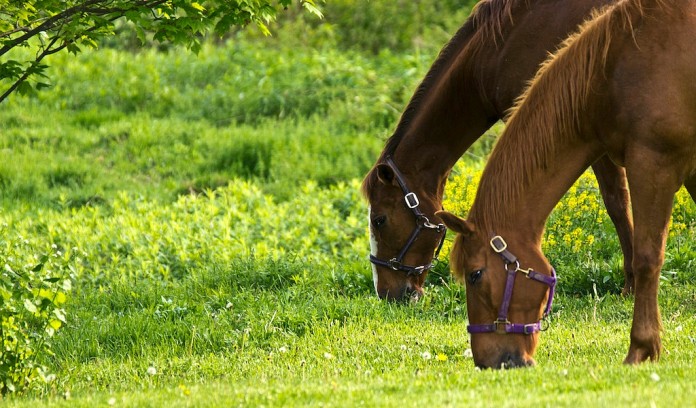When it comes to pasture management for horses, one size does not fit all. Horses and ponies vary in size, age, work status and physiological condition. These differences lend themselves to variations in nutritional requirements, body condition and sensitivity to the amount of starch, sugar and fructans known as nonstructural carbohydrates found in pasture and hay.
In addition, horse owners are dealing with animals that can selectively graze what they want. Most of our Ohio pastures start out as cool-season grass species that tend to accumulate nonstructural carbohydrates that can become an issue for some horses and ponies. Each horse can vary in sensitivity to the energy content found in forages. Pasture-associated laminitis can occur in horses and may be linked to high levels of NSC, although other equine metabolic factors also seem to play a role.
Energy varies
The concentration of energy found in pasture and hay can vary based on forage type, plant maturity, growing conditions, season, fertility and time of day. The lowest levels of NSC in our common cool season pasture grasses would be found in the very early morning hours. Once the sun rises, the process of photosynthesis begins again, and sugars start to accumulate in the growing plant.
The concentration of NSC levels in cool season pasture grass tends to be higher in spring, lowest in summer and rises again in the fall mimicking the seasonal growth pattern for these plants.
As grass plants mature, NSC content tends to decrease; however, seed heads can concentrate starch in the seeds themselves while excess energy is stored at the base of the plant and root. Overgrazing or mowing pastures consistently below 3-4 inches may cause horses to consume more NSC in cool-season forage grasses.
Overgrazing or clipping too short for extended periods of time will kill some tall cool season grasses such as orchard grass. These grasses will likely be replaced with weeds, crabgrass, white clover and goosegrass here in Ohio.
Unique needs
Each farm is dealing with unique animals and some of these animals may have specific needs and sensitivities. This makes it difficult to generalize specific pasture management recommendations and therefore should be considered by onsite evaluation and individual farm basis.
Pasture management and livestock management determine what is available in our paddocks. When managing sensitive animals, always utilize your veterinarian and farrier. Work with them to formulate a season-long plan for horse energy management and horse hoof care.
It may be helpful to know the NSC levels found in your pasture and hay. Your local OSU Extension office can help you find forage testing laboratories that can analyze fresh pasture and hay for NSC. Utilize a forage testing probe to sample hay and follow laboratory instructions for sample submission and collection.
Many universities publish equine body condition score sheets that are designed to help owners evaluate equine fat covering. Generally, we like to see horses in the mid 4-6 BCS range while obese animals in the 7-9 range may be more sensitive to forage energy content.
In some cases, it will be necessary to look at the entire horse ration and adjust according to your veterinarian’s advice. It may be necessary to limit pasture intake with the use of a grazing muzzle.
Another management practice would be to feed a low-calorie hay before turnout and limit the length of time horses are grazing. When feeding horses, it is important to make any adjustments in feed, pasture, and hay very slowly and under the advisement of your veterinarian.













